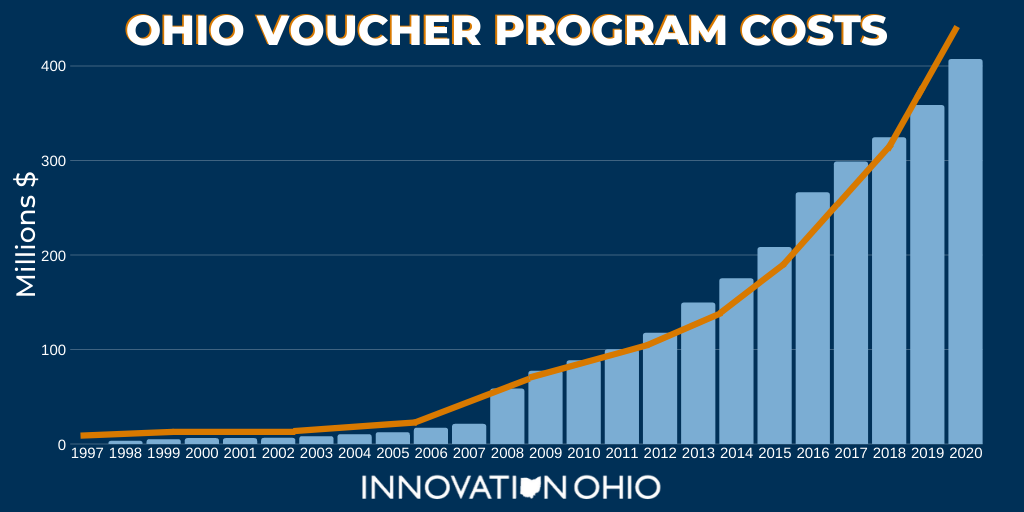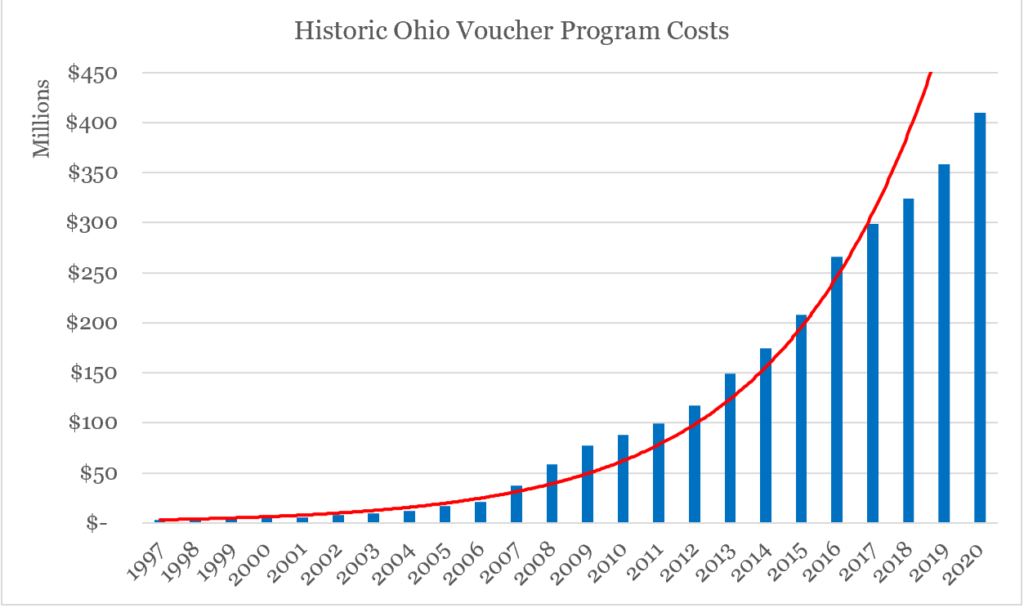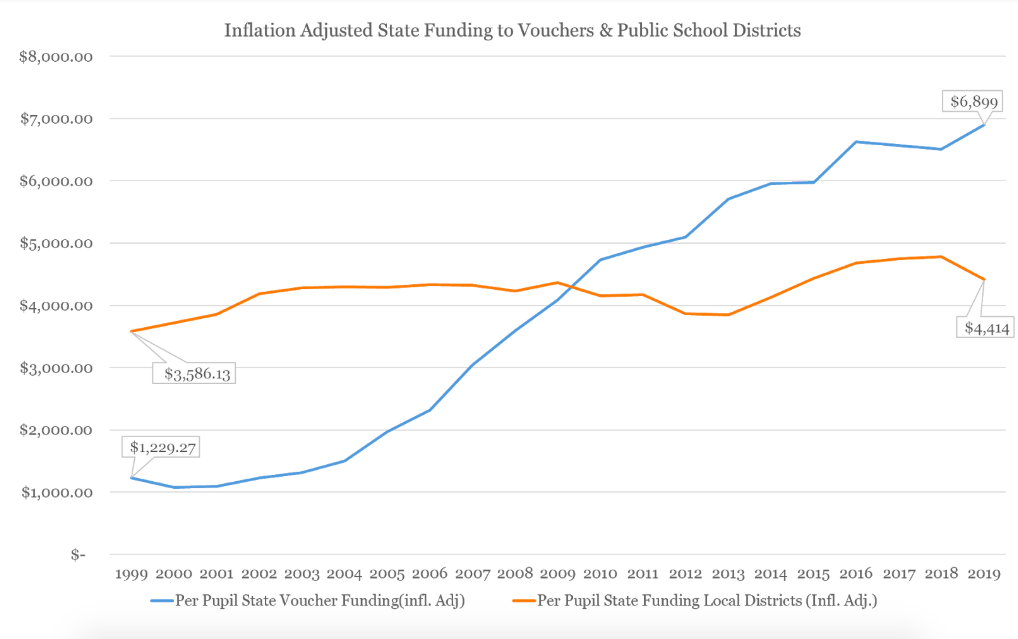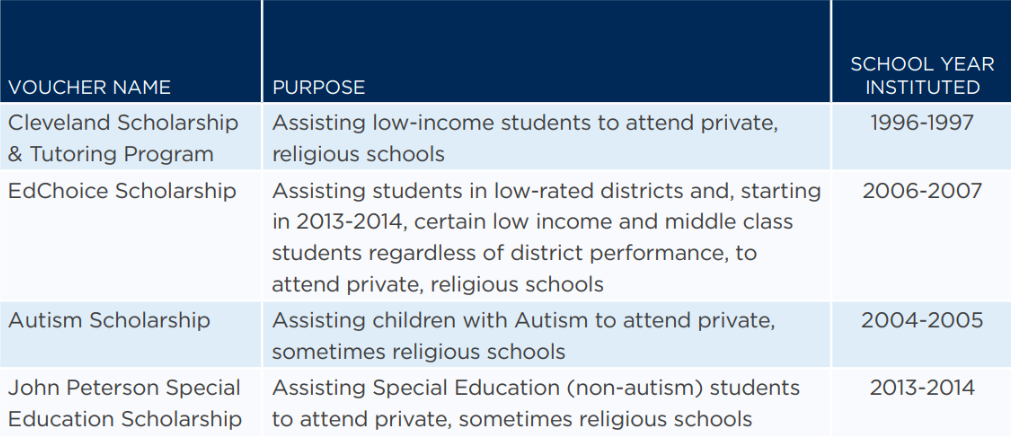Without legislative action, Ohio public schools face a funding crisis as expanded eligibility for private school vouchers could drain local school districts of state funding necessary to operate.
The latest data from the Ohio Legislative Service Commission clearly shows that House-passed changes to the EdChoice voucher program (contained in amendments to Senate Bill 89) would offer a needed reprieve to children in public school districts across the state when compared to the status quo if nothing changes.
Lawmakers are currently debating two solutions to the voucher crisis, but the House plan, contained in Senate Bill 89, is preferred by most education groups.
That’s because Senate Bill 89 eliminates the performance-based EdChoice voucher which awards students a private school voucher if their local school building fails on even a single state report card measure. Recent changes to state report cards have driven a huge increase in the number of districts slated to lose students and funding as early as next year.
If left unchecked, 1,227 buildings – more than 1/3 of all Ohio public school buildings – would qualify for a voucher next year, potentially increasing the amount of money spent on the state’s 5 voucher programs to $500 million or more a year.

Senate Bill 89 would reduce that expansion in buildings losing funding and students to vouchers by significantly limiting eligibility for any new vouchers based on school building “performance” (as measured by state report cards).
Senate Bill 89 retains the state’s other, income-based version of the EdChoice voucher, which would be limited to families earning up to 300 percent of poverty. Under the plan, the state would begin directly funding vouchers, eliminating the transfer of taxpayer dollars meant for kids in local public schools to private schools.
Here is how it plays out for a few key State Senators who would need to vote to agree to House changes to Senate Bill 89 for it to become law:
Buildings At Risk of Voucher Funding Losses: Status Quo vs Senate Bill 89
| Senator | 2019-20 school year | 2020-21, if nothing changes (current law) | If SB89 passes, 2020-21 | |
| Dolan | ||||
| Hottinger | ||||
| Kunze | ||||
| Obhof | ||||
| Peterson | ||||
*Please note that a school district is counted as part of the Senate District if the Senator represents 10% or more of the school district.
The impacts on many vulnerable lawmakers in an election year are stark.
If Senate Bill 89 were to become law, Franklin County Senator Stephanie Kunze would see the number of voucher-eligible buildings set to lose students and funding to private schools in the 2020-2021 school year go from 32 to just two. Similarly, Cuyahoga County’s Sen. Matt Dolan would see eligible buildings plunge from 24 to 3.
Even members of Senate leadership would see major benefits from the passage of Senate Bill 89.
State Sen. Jay Hottinger, in line to have 59 voucher-designated buildings in his senate district next year, would see that number drop to zero under Senate Bill 89, while State Sen. Bob Peterson would see his district’s 62 voucher-eligible buildings drop to 6. Even Senate President Larry Obhof would see his buildings drop from 31 to 3.
Statewide, under Senate Bill 89, the number of eligible buildings would drop from potentially 1,227 next school year to just 343.
An attached spreadsheet shows how Senate Bill 89 would address the voucher explosion in all Senate districts.
The analysis is clear: Senate Bill 89 is needed to address the immediate voucher crisis facing Ohio public school districts






